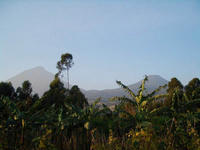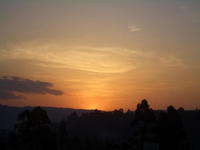You are in: Africa -> Uganda -> Bwindi Impenetrable ... , and traditional search or Image Gallery will yield results of this site only
Bwindi Impenetrable National Park
| Site number: | 682 |
|
| Type of site: | Natural | |
| Date: | - | |
| Date of Inscription: | 1994 | |
| Location: | Africa, Uganda, Districts of Kabale, Kisoro and Rukungiri | |
Up to 75 images are shown here. Click on each for more details or on Image Gallery for more images.
| Description: | The 32,000 ha Bwindi Park, situated in south-western Uganda, at the crossroads of the plain and mountain forests, is known for its outstanding biodiversity, boasting over 160 tree species and over 100 species of ferns. Countless bird and butterfly types can also be found there, in addition to scores of endangered species, including the mountain gorilla. --WHMNet paraphrase from the description at WHC Site, where additional information is available. For 360 degree imaging of this site, click here. | |
| The Bwindi Impenetrable National Park is located in southwestern Uganda in East Africa. The park is part of the Bwindi Impenetrable Forest, and is situated along the Democratic Republic of Congo border next to the Virunga National Park and on the edge of the western Rift Valley. It comprises 331 square kilometers of jungle forests and contains both montane and lowland forest and is accessible only on foot. The Bwindi Impenetrable National Park is a UNESCO-designated World Heritage Site. The park is a sanctuary for colobus monkeys, chimpanzees and many birds (such as hornbills and turacos). It is perhaps most notable for the 340[1] Bwindi gorillas, half the world's population of the critically endangered Mountain Gorillas. There are four habituated Mountain Gorilla groups -- the tourist groups, 'Mubare', 'Katendegyere' and 'Rushegura', as well as one research group. The forest is one of the richest ecosystems in Africa, providing habitat for some 120 species of mammals, 346 species of birds, 202 species of butterflies, 163 species of trees, 100 species of ferns, 27 species of frogs, chameleons, geckos and many endangered species. In particular the area shares in the high levels of endemisms of the Albertine Rift. --Wikipedia. Text is available under the Creative Commons Attribution-ShareAlike License. For 360 degree imaging of this site, click here. | ||
| Source: | http://whc.unesco.org/en/list/682 | |
| Reference: | 1. UNESCO World Heritage Center, Site Page. | |





















































